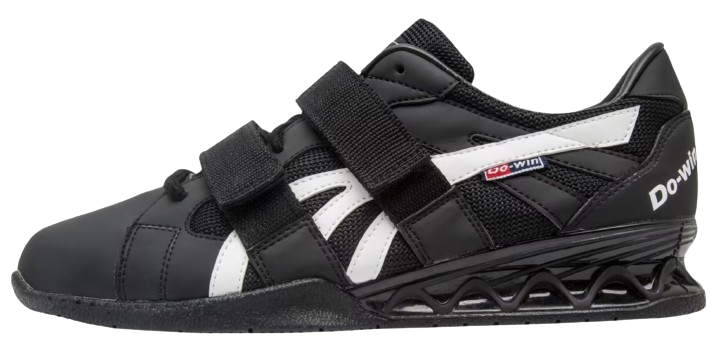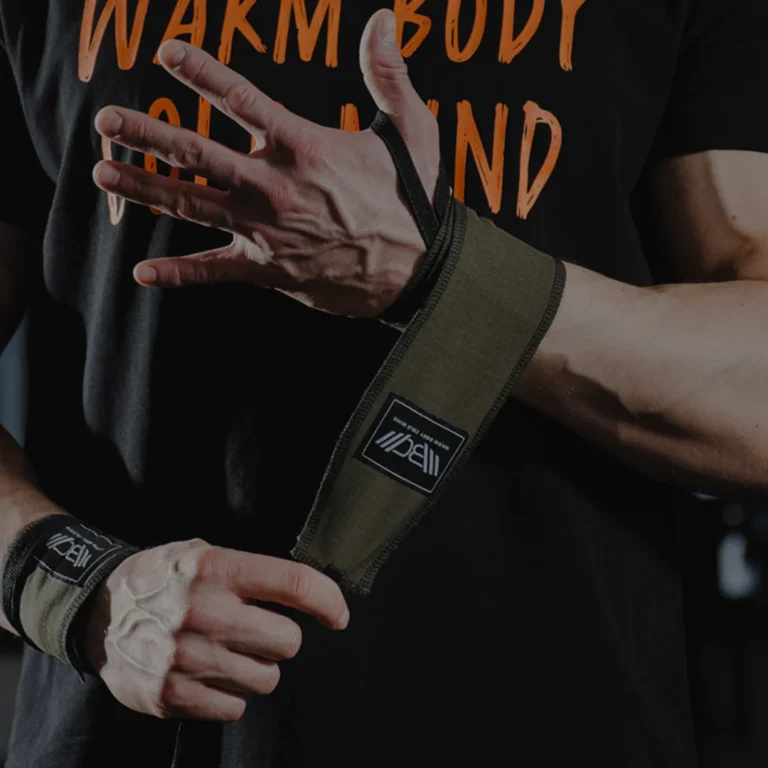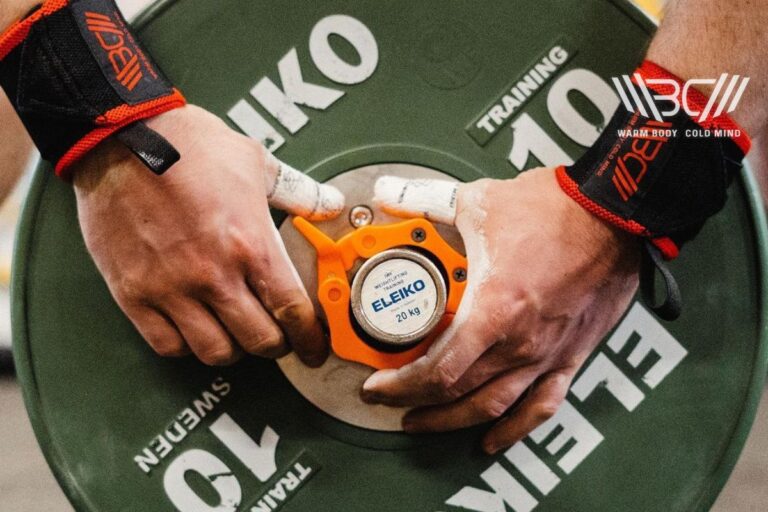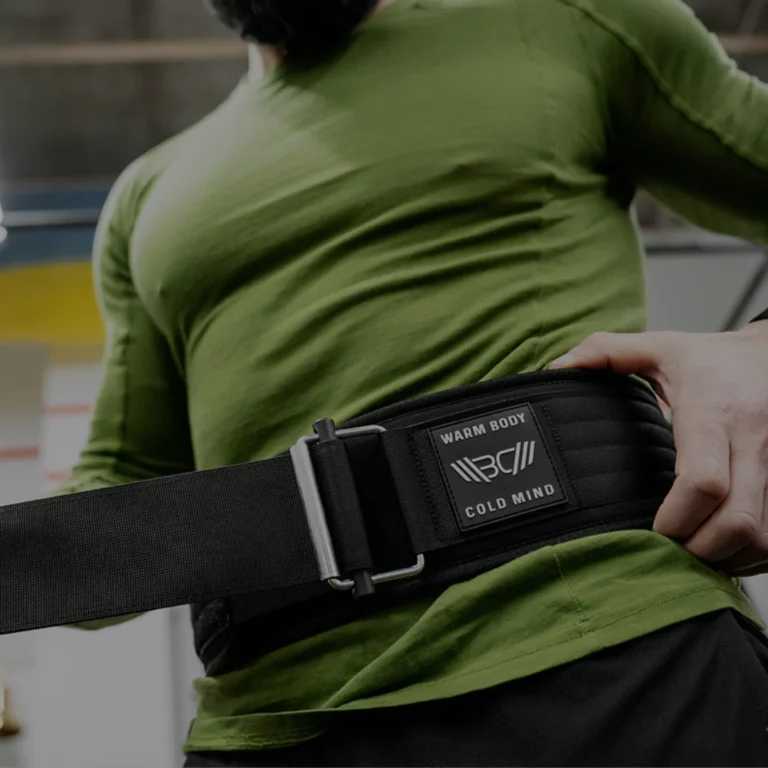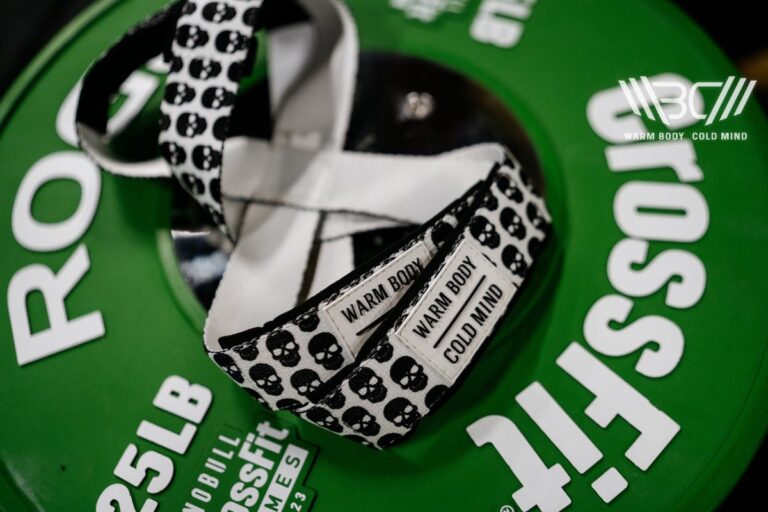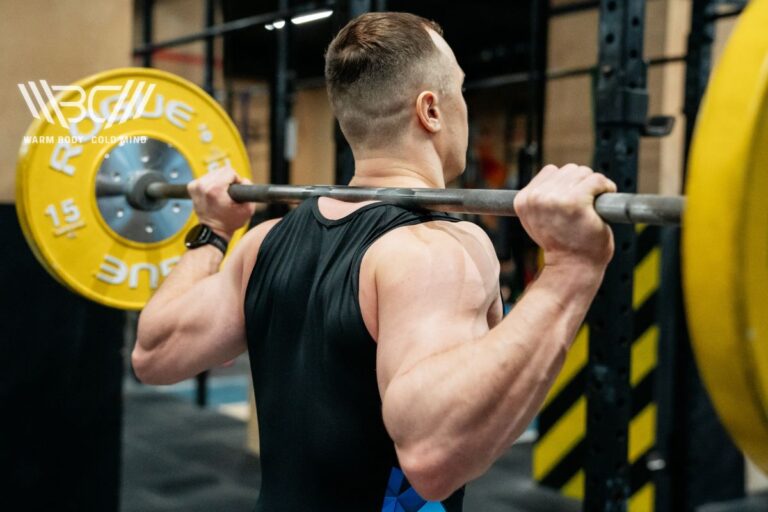Lifting in Crocs: Can You Workout In Them?
Crocs have become a popular footwear since they were released. Many people love them because of their comfort and crocodile-like design. With the everyday use of crocs, many gym enthusiasts are considering wearing crocs to the gym, or lifting in crocs.
The big questions on their minds are: Can you wear crocs to the gym? Is lifting weights in crocs safe? Are crocs good lifting shoes? Are crocs the better workout shoes?
In this article, we will explain what crocs are, and provide a breakdown of whether you can workout in crocs. We will also cover possible benefits and disadvantages of training in crocs.
Lifting in Crocs: Is It Good or Bad? – Lifting in crocs is not ideal if you plan to lift heavy weights because they lack stability, mid-foot and ankle support, and protection, even in sports mode. However, you can workout in crocs and perform certain exercises at a very casual level.
What Are Crocs?
Crocs are a crocodile-like shaped slip-on shoe with a heel strap for extra support. The name ‘crocs’ originates from the design that resembles the scales of a crocodile.
Crocs were first released in 2002, but have become a worldwide sensation in the last few years. Several people wear crocs every day, even to the gym.
Crocs are produced with a resin-like material. It features a scaly top, curvy/sponge inner sole, non-slip sole and a heel strap.
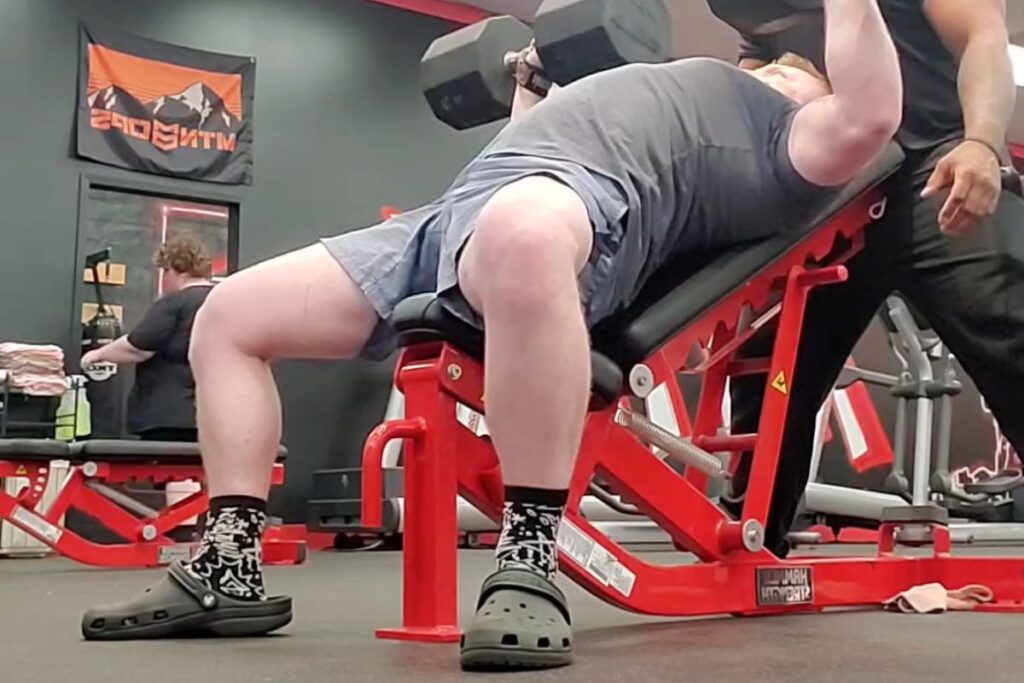
Can You Workout in Crocs?
Crocs are not the best workout shoes, but most people use them for workouts anyway.
Furthermore, many people believe that putting crocs in sports mode or pulling down the straps makes it perfect for workouts because the strap helps to lock your feet on the crocs, preventing you from sliding off during workouts.
However, if you plan on working out in crocs, you should perform light exercises.
Here are some possible exercises you could do in crocs:
1. Running
You might have asked: Can you run in crocs?
You can run in crocs, but it’s not ideal for long distances. Crocs lack ankle and heel support, which are required to run long distances. Insufficient ankle and heel support can lead to injuries.
Furthermore, crocs lack certain features such as cushion, traction on surface, and stability control etc.
2. Treadmill
Most crocs lovers ask: Can You Wear Crocs on a Treadmill?
You can actually wear crocs on a treadmill but it’s not ideal for long hours. Although crocs are generally lightweight and comfortable, they lack heel support. Without adequate heel support, you can strain and hurt your feet.
Additionally, crocs lack mid-foot support and this can worsen any potential feet condition.
That’s why it’s advisable to invest in proper training shoes with extra cushion.
3. Squatting
Can you squat in crocs? Can you lift in crocs? Most fitness enthusiasts ask these questions.
You can actually squat in crocs, but you need to keep a few things in mind.
First, crocs are not designed for heavy lifting or high impact exercises. Therefore, if you intend squatting in crocs, you need to perform light squatting or bodyweight exercises.
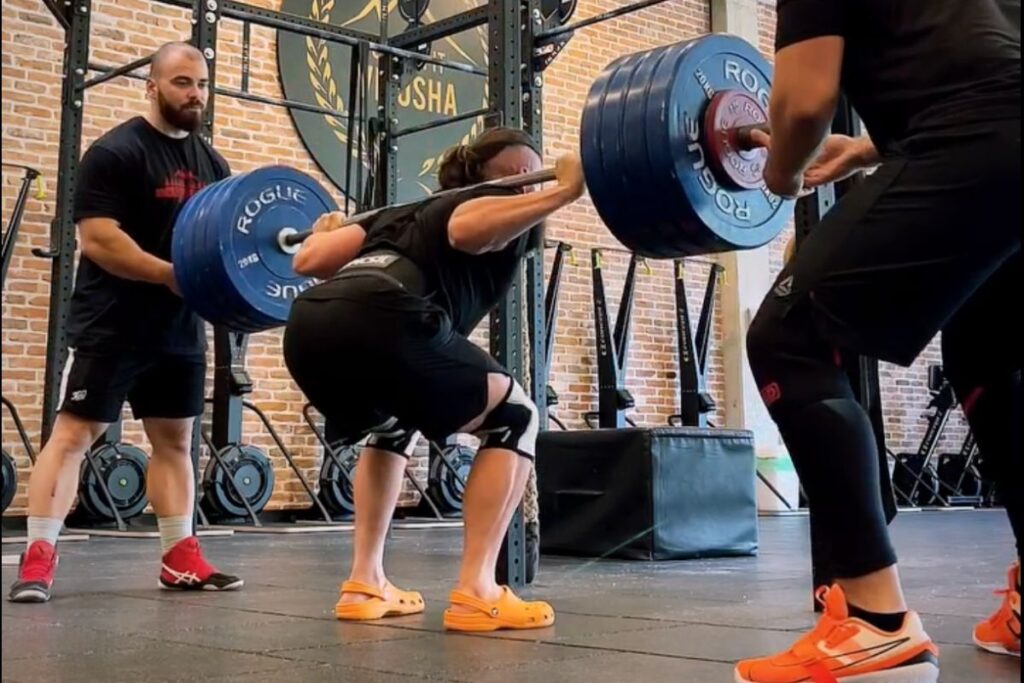
Second, putting the crocs in sports mode to lock the feet and stop it from slipping off doesn’t compensate for training shoes. If you plan to perform heavy squats, opt for training shoes.
Third, crocs can get slippery when they get wet. Therefore, if you want to perform exercises that demand change of direction or quick movement, you need to stick to training shoes.
6 Benefits of Training in Crocs
Here are some benefits of training in crocs:
✅ Flexibility
A tight footwear will cause pain, blisters and make your workout challenging.
With crocs, you can move about freely. Crocs are produced with a flexible resin material known as Croslite, which can reduce friction and the risk of blisters.
In addition, this material allows you to workout comfortably in the gym.
Clinical trials show that flexibility plays a role in injury prevention.
✅ Light Weight
Crocs are lightweight and easier to move about in because of the nature of the materials it is produced with. Compared with other shoes such as boots, crocs are less fatiguing and can help you conserve your energy for workouts.
✅ Air Conditioning
Crocs are designed with holes all around it. This allows free passage of air and provides conditioning for the feet. The holes also keep the feet cooler during workouts.
✅ Non Slip Outsoles
Crocs have a grippy bottom outer sole that helps trainers find support and prevents them from slipping during workouts such as squats.
Slipping during workouts can lead to a fall and injuries. Additionally, it can also make lifts less effective, and keep the momentum going.
✅ Heel Lifted
Crocs are an example of heel lifted shoes. Many professionals recommend heel lifted shoes for different squat variations.
This is because the heel lift places the ankle in a pre-plantarflexed position, which provides more squat depth and targets the knee joints by maintaining a more upright trunk.
This position puts more emphasis on the quadriceps muscles and helps to improve their strength and size in the long run.
A study published in the European Journal of Sports Science analyzed the influence of different footwear on kinematics and muscle activation during barbell back squat.
In comparison to barefoot, it was observed that running shoes showed higher muscle activation, increased squat depth and knee flexion.
Although crocs slightly differ from running shoes, they both have the same structure. They both have lifted heels, spongy internal soles and a grippy outsole.
✅ Protection From Foreign Objects
Crocs outer soles help protect the feet from foreign objects. For instance, if there’s a piece of metal or glass in the gym, and someone mistakenly steps on it, the outer sole will not allow the sharp objects to puncture through your feet.
In addition, if a trainer mistakenly drops a weight on your foot, croc vamp will protect your foot from injuries such as torn ligaments and fractured bones.
Subscribe!
The latest reviews of must-have home gym training equipment, apparel, and supplements that will enhance your performance and bring you new results.
4 Disadvantages of Training in Crocs
Here are some disadvantages of training in crocs:
❌ Instability
Crocs lack stability and this is perhaps one of major drawbacks of training in crocs. Crocs are made up of a resin material called Croslite that does not contain rubber or plastic.
Although the material is lightweight and provides a level of cushion, but it compresses fast. This can cause accidents when lifting heavier loads.
❌ Low Foot Protection
Since crocs are not close-toed, it lacks high foot protection. When performing workouts in the gym, maximum foot protection is required to prevent friction from training and accidents from falling objects.
Crocs are lightweight and exposes half of the foot because of its construction.
❌ Limited Exercise Selection
Since crocs are not necessarily designed for workout, therefore one can only perform a few light exercises.
In addition, the foot protection of crocs reduces the number of exercises one can perform in it.
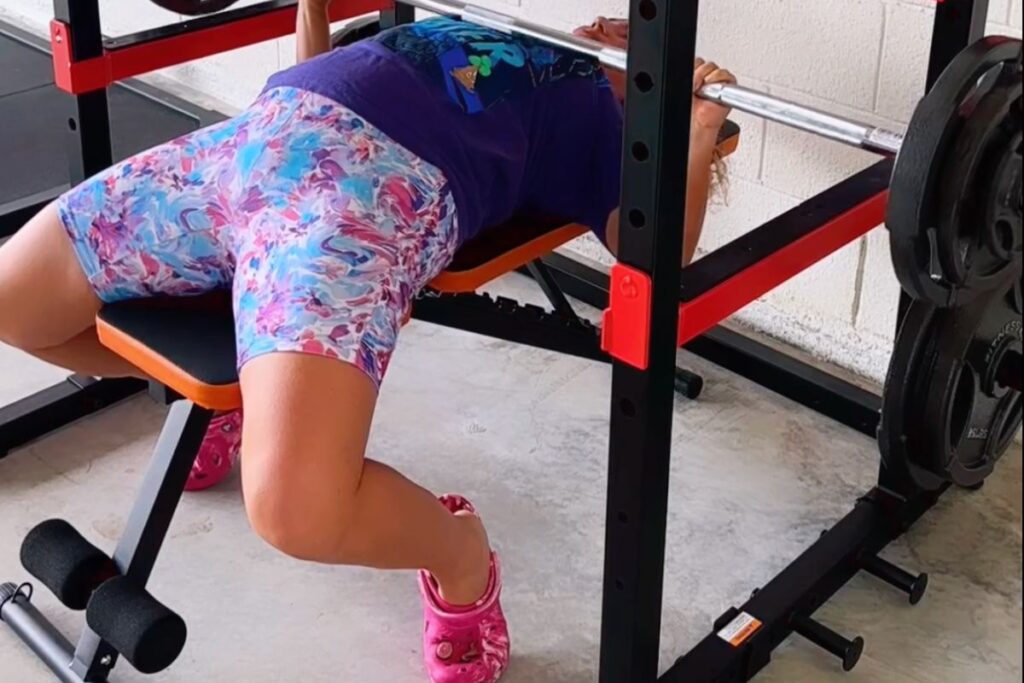
❌ Slip off Your Feet
Even in sports mode, or pull down the straps, there’s still space left in your toe box. Because of this, you can find the crocs moving up and down your feet.
If you’re working out in this condition, you will be unable to ground your feet.
Training Shoes vs. Crocs: Which Is Better?
When it comes to workout, Training shoes are much better than crocs because they’re designed for training. Working out in crocs is not advisable.
Crocs are better for everyday use because of its features. They’re perfect for quick errands or a stroll in the park.
1. Performance
Since training shoes help to keep stability, they help reduce the risk of injuries and improve performance. This is because trainers with better stability can perform various movements with ease.
Clinical trials show that different types of footwear have an effect on running performance.
2. Safety
Training shoes are safer to train in because it will protect your feet against accidental falling objects, or any damages.
3. Comfort and Stability
Training shoes provide the best cushion that adds an extra layer of comfortability to your workouts. Also, training shoes provide more ankle support and stability during workouts.
Scientific studies have proven that running with shoes and a gait pattern that offer comfort are highly efficient and may prevent injuries.
Our Recommendation of Crocs – Rogue Fitness International
Rogue fitness Crocs is our recommended crocs. With its supportive and slip-resistance features, Rogue crocs is produced with high-quality materials and is perfect for everyday use.

Whether you are taking a walk, going shopping, or running errands, Rogue crocs got it covered. With four custom jibbitz charms, you can enjoy the comfort of your favorite shoe in style.
Our Recommendation of Alternative Training Shoes – Do-Win Weightlifting Shoes
Do-Win Weightlifting Shoes are our recommended training shoes. With 19 different sizes, Do-win has a size meant for everyone who wants to achieve their weightlifting goals.
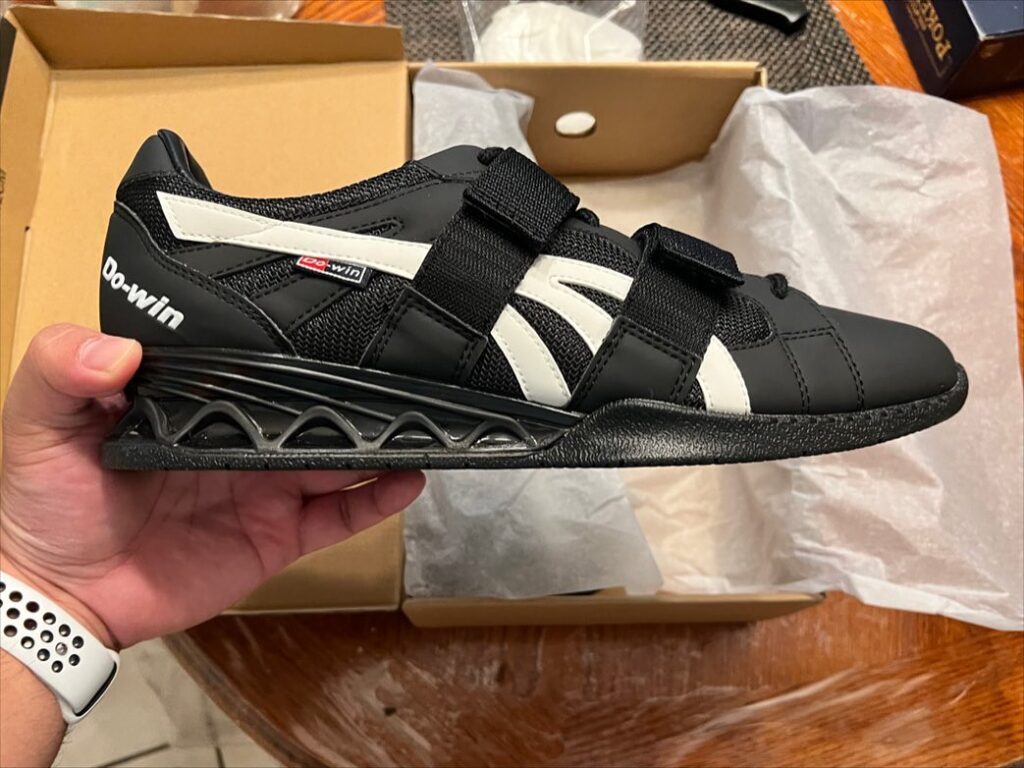
Tailored to the weightlifting community, Do-win features 0.75 inches strong plastic heel, breathable nylon, and a single sole construction for ideal flexibility and durability.
FAQ
Can You Squat in Crocs?
Yes, you can squat in crocs. However, you need to understand that crocs are not ideal for heavy squats.
Are Crocs Good for Walking?
Crocs are perfect for walking because it is lightweight, flexible, comfortable and provides air conditioning for the feet.
Conclusion
Crocs are lightweight, flexible, and gentle on the feet. They’ve become increasingly popular in the last few years. Many people wear them daily, and some prefer working out in crocs.
Despite the benefits of crocs, it’s vital to understand that crocs are not designed for workouts and is not ideal for heavy or high impact exercises.
Rogue fitness crocs are our recommended crocs. Designed with top notch materials, Rogue crocs are perfect for everyday use.
Do-win is our recommended training shoe. Crafted with strong and durable materials, Do-win has several sizes for anyone.
Do you wear crocs? What do you like about it? Have you worn crocs to the gym before? Did you find working out in crocs comfortable? Share your experience in the comments.
References:
- Jonathan Sinclair, Derek McCarthy, Ian Bentley, Howard Thomas Hurst & Stephen Atkins (2015) The influence of different footwear on 3-D kinematics and muscle activation during the barbell back squat in males, European Journal of Sport Science, 15:7, 583-590, DOI: 10.1080/17461391.2014.965752.
- Ingraham SJ. The role of flexibility in injury prevention and athletic performance: have we stretched the truth? Minn Med. 2003 May;86(5):58-61. PMID: 15495679.
- Jastifer JR. Contemporary Review: The Foot and Ankle in Long-Distance Running. Foot Ankle Orthop. 2022 Sep 26;7(3):24730114221125455. doi: 10.1177/24730114221125455. PMID: 36185350; PMCID: PMC9520164.
- Fuller JT, Bellenger CR, Thewlis D, Tsiros MD, Buckley JD. The effect of footwear on running performance and running economy in distance runners. Sports Med. 2015 Mar;45(3):411-22. doi: 10.1007/s40279-014-0283-6. PMID: 25404508.
- Photos by Rogue.com, Rogue instagram.
Author: Jason Li
Personal Coach | Functional Range Conditioning Mobility Specialist
Jason is an NYC personal training expert and National level Olympic Weightlifting Coach with over 10 years of experience training everyday clients to high levels of performance. He has trained everyone from youth (13 years old and under) to masters (60+ years old) to regional and national rankings for powerlifting, Olympic Weightlifting, Short distance (up to 200m) sprinting, discus & hammer throwing.



